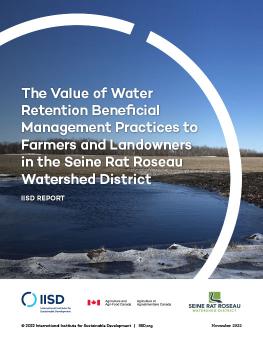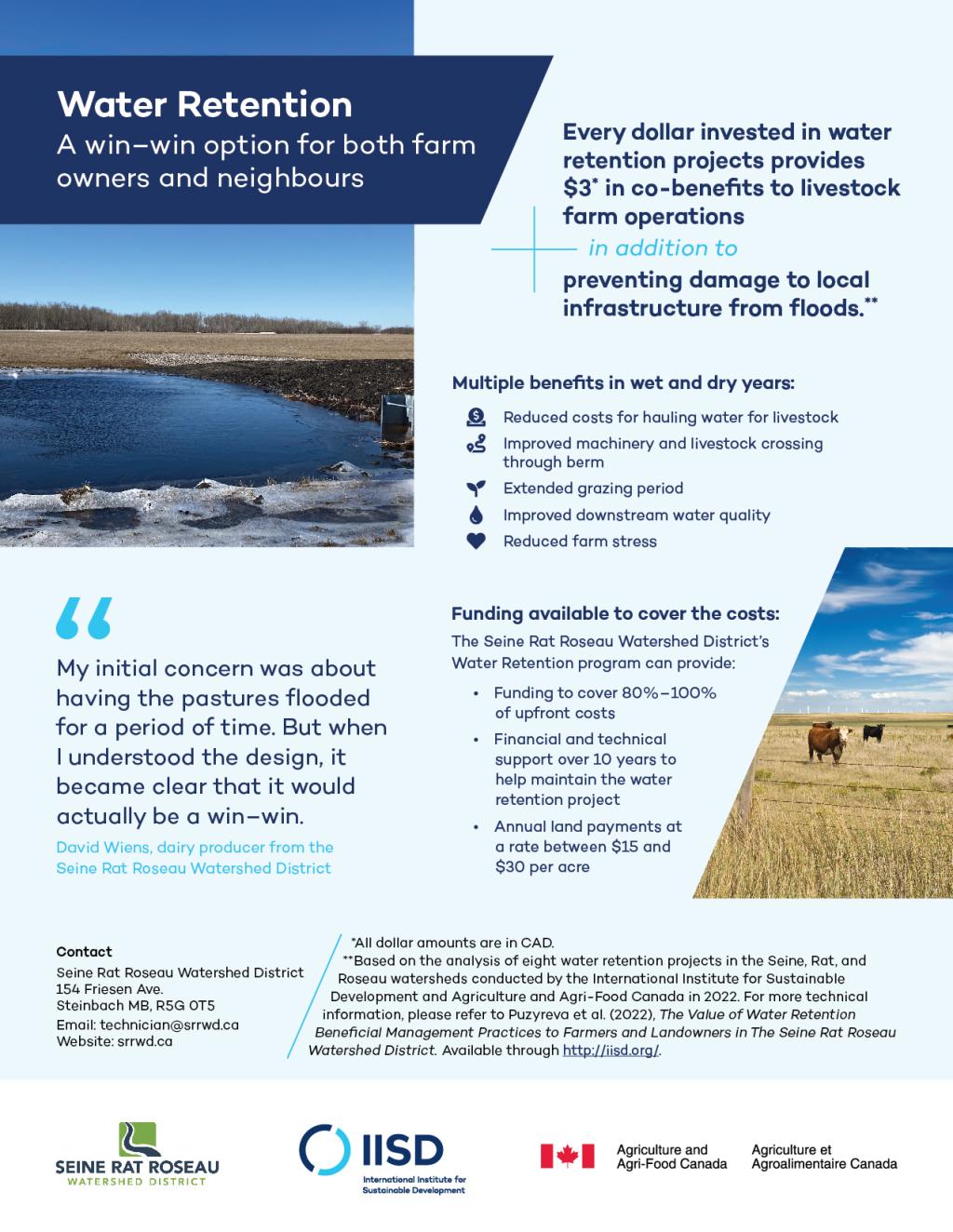
The Value of Water Retention Beneficial Management Practices to Farmers and Landowners in the Seine Rat Roseau Watershed District
Considering the increasing frequency and length of droughts as well as a greater potential for flash floods in Manitoba, water retention projects are an important option to help agricultural producers maintain productivity on their farms while also providing benefits to the local watershed. This report examines the costs and benefits of 10 water retention projects constructed in the Seine, Rat, and Roseau watersheds in Manitoba to assess their economic returns and communicate these findings to producers, Watershed Districts, and government.
-
The design of the water retention project is key and can provide a win-win option for both farm owners and their neighbours.
-
Every dollar invested in water retention projects provides CAD 3 in co-benefits to livestock farm operations in addition to preventing damage to local infrastructure from floods.
In 2022, the International Institute for Sustainable Development (IISD), Seine Rat Roseau Watershed District (SRRWD), and Agriculture and Agri-Food Canada Living Lab Eastern Prairies economic team collected and analyzed cost, benefit, and other related information for 10 water retention projects constructed in the Seine, Rat, and Roseau watersheds in Manitoba, Canada. The water retention projects examined in this study were constructed predominantly on livestock farms. However, many of the producers surveyed had a combination of pasture and cropland on their farms.
Based on the evidence collected, the installation of water retention projects changed farm management, allowing for more efficiency and multiple benefits in wet and dry years. The most common benefits reported by producers were:
- Flood protection
- Extended grazing period
- Reduced need to haul water for livestock
- Improved livestock, machinery crossing through berm
- Enhanced wildlife habitat
- Improved downstream water quality
Based on the analysis of 10 projects, the average benefit-to-cost ratio for implementation of water retention project is 2.45, which means that for every dollar invested in water retention over the period of 20 years, producers and the watershed receive $2.45 in water quality, extended grazing, and other co-benefits.
Considering only livestock farms, the average benefit-to-cost ratio is 3.16, meaning that for every dollar invested, livestock producers and the watershed receive $3.16 in water quality, extended grazing, and other co-benefits. Net benefits tended to be highest for the projects that were in operation longer than other water retention projects and reported multiple on-farm benefits.
Learn more from Water Retention: A win-win option for both farm owners and neighbours

Participating experts
You might also be interested in
How Can We Work With Nature to Tackle Drought and Desertification?
Drought is one of the most devastating and pervasive challenges exacerbated by climate change. However, we can work to reduce its effects through nature-based solutions for land restoration and climate-smart agriculture.
Modelling the Impacts of Policy Interventions for Agrifood Systems Transformation in Indonesia
This report provides context and insights for agrifood systems transformation efforts in Indonesia by detailing an innovative modelling approach and offering policy implications and next steps to inform the Indonesian government's development planning.
Estimate of Natural Infrastructure Public Grant Funding in Canada and in the Canadian Prairies
This analysis estimated the amount of public grant funding available across Canada and in the Canadian Prairie provinces for investing in urgently needed natural infrastructure.
Financing for Natural Infrastructure Projects
This report shows how private capital can finance natural infrastructure to meet our water needs, making financing decisions, and investment benefits.